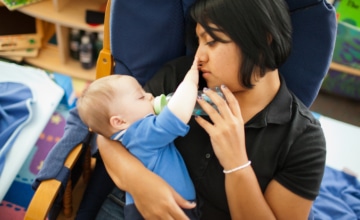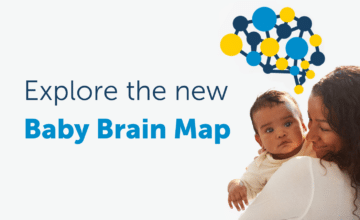Although the brain undergoes remarkable development during pregnancy, a newborn baby’s brain is still very much a work-in-progress.
At birth, the brain is small—just over one-quarter of its adult size—and its development is uneven. While the lower portions of the nervous system, such as the spinal cord and brain stem, are well-developed, the higher regions, including the limbic system and cerebral cortex, remain relatively primitive.
In these early phases of brain development, the lower brain primarily controls a newborn’s behavior. Actions like kicking, grasping, crying, sleeping, rooting, and feeding are managed by the brain stem and spinal cord. Even newborns’ ability to visually track bold moving objects, such as a red ball of string, or recognize familiar faces like Mom or Dad, is thought to be controlled by visual circuits in the brain stem. Pediatricians assess these lower neural centers during reflex tests, such as the doll’s eye maneuver (where a baby’s eyes remain focused forward when their head is turned), the Moro or startle response (where a baby splays their arms in reaction to sudden movement), and the stepping reflex (where a baby mimics walking when held upright with their feet touching a flat surface).
Nature ensures that the most vital neural circuits, responsible for essential functions like breathing, heartbeat, circulation, sucking, and swallowing, are fully operational by birth. This prenatal brain development sets the stage for a baby’s survival outside the womb. Meanwhile, the rest of brain development unfolds more gradually, allowing a baby’s experiences and environment to play a critical role in shaping their emerging mind.




